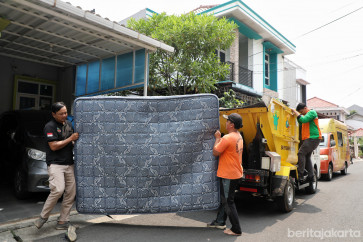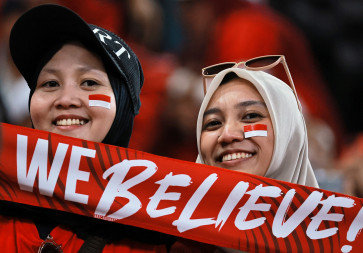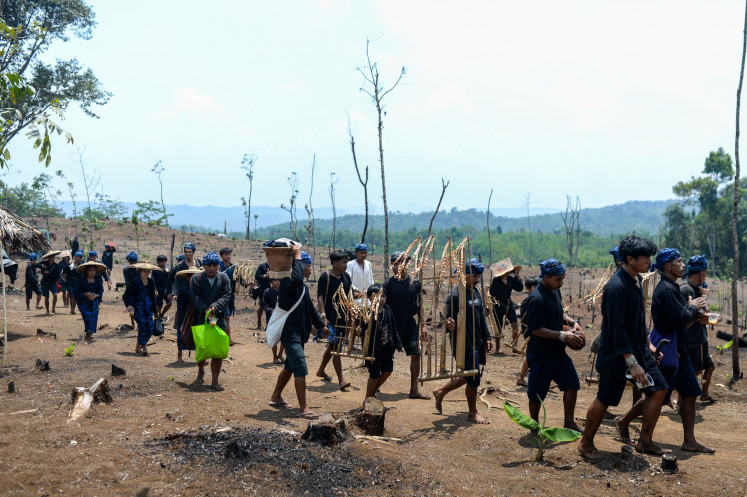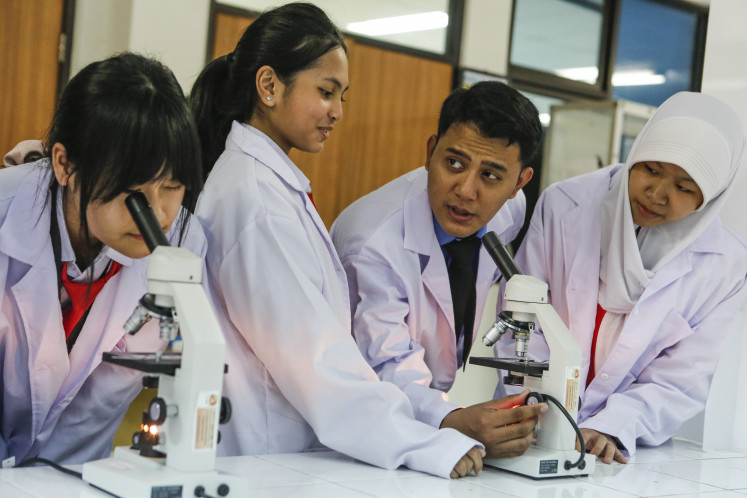Popular Reads
Top Results
Can't find what you're looking for?
View all search resultsPopular Reads
Top Results
Can't find what you're looking for?
View all search resultsSocial capital and disasters
In the last two weeks we have seen many initiatives and solidarity movements ventured upon by Indonesians to help the victims of natural disasters in Wasior, Mentawai and Yogyakarta
Change text size
Gift Premium Articles
to Anyone
I
n the last two weeks we have seen many initiatives and solidarity movements ventured upon by Indonesians to help the victims of natural disasters in Wasior, Mentawai and Yogyakarta.
Fund raising and charity nights were organized by various groups in numerous cities to collect money and materials to be distributed to the survivors.
Through mass media we have also seen people in the villages and small towns in Yogyakarta work together to provide food and shelters for those who had to leave their houses due to the eruptions of Mt. Merapi. Moreover, we have witnessed the initiatives of young people in Yogyakarta to organize sekileran, a common practice to collect funds in order to help those affected by a disaster or other misfortune.
These initiatives are hard evidence of the presence and well maintained social capital of Indonesians.
It is noteworthy that a disaster is not only a natural phenomenon, but also has numerous social dimensions.
A natural disaster may severely disrupt the normal functioning of a society and its subunits.
Furthermore, natural disasters frequently have severe psychological, physical, social and economic impacts on people’s lives.
However, amid a natural disaster it is very common to see initiatives and strong individuals as well as community resilience combined to mitigate a disaster’s devastating consequences.
In the past few decades, there has been an increasing number of studies addressing the roles of social capital in enabling (or impeding) people’s efforts to decrease the severe impacts of natural disasters.
Social capital can be briefly defined as direct and indirect resources that are a by-product of social networks and social support systems among family, friends or community members.
In the context of natural disasters, social capital at a micro level may perform several key roles, including providing early warning or information to the people before and during the disaster; facilitating a timely rescue and other forms of support for disaster victims; providing resources and assistance during the recovery period, which helped the victims recover quicker and better; as well as providing mental support, which buffered the negative effects of a disaster on victims’ mental health.
In addition, social capital at a macro level may enable people and communities to consolidate and coordinate in order to be effectively engaged in designing, implementing and evaluating medium and long-term social and economic rehabilitation in the aftermath of a disaster. These are crucial since evidence indicates that communities with a strong tradition of social participation and self-organization react more efficiently to the disasters as well as the fact that a community with a stronger social capital indicated by stronger networks, norms and trust generally recovers quicker and better from a disaster.
However, the studies also maintained that there are differing levels of social capital possessed by the victims or survivors of a natural disaster and these are closely related to many aspects including their socioeconomic status, ethnicity or race.
Those who are of lower socioeconomic status and suffer from social exclusion due to their ethnicity or race frequently have more restricted social networks and rely solely on their immediate or proximate networks (popularly called bonding social capital) for assistance in their efforts to overcome and recover from a disaster.
While those from higher socioeconomic backgrounds commonly have wider social networks and associations with key people and institutions (bridging and linking social capital) who have authority in organizing and implementing rehabilitation programs and thus have higher access to those programs.
These phenomena were clearly shown in the aftermath of Hurricane Katrina in New Orleans in which poor African-Americans suffered greatly due to their restricted social networks and lower access to information and facilities.
In the context of Indonesia, it is important for the government and relevant agencies to identify and reach the most vulnerable groups and facilitate comprehensive social and economic programs to enable them to cope with and minimize the impacts of disasters on their daily lives.
It is also important to remember that, even though the public initiatives and solidarity movements to help the victims of a disaster are good news and should be appreciated, these in most cases do not last very long and are aimed in the large part at short-term responses, and therefore cannot substitute the role of government (at all levels) to assist medium and long-term recovery and rehabilitation programs.
The writer, a lecturer at Hasanuddin University, Makassar, is a PhD candidate at Melbourne School of Population Health, the University of Melbourne, Australia.










